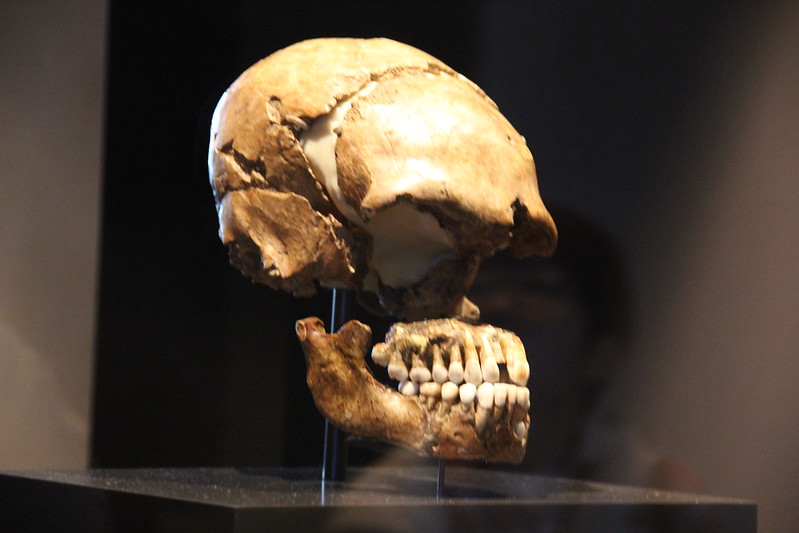
A recent study suggests humans and Neanderthals mated earlier than we thought, roughly 250,000 years ago. According to a 2016 study, they first interbred about 75,000 years ago. Although these early humans vanished, they left a mark in the DNA of Neanderthals who followed as a result.
Revelations From DNA Studies
About six percent of the genes in a Neanderthal found in Siberia could be traced to humans. Furthermore, some groups of people in sub-Saharan Africa also have a bit of Neanderthal DNA. This is because of the humans who mixed with Neanderthals and then moved back to Africa.
Michael Dannemann, an associate professor specializing in evolutionary and population genomics at the University of Tartu in Estonia who wasn’t part of this study, revealed that “the enhanced understanding derived from this research will enable us to annotate Neanderthal DNA in modern human genomes, as well as the reverse process, with greater accuracy.”
This, he explained, will aid scientists in better foreseeing how the blending of genes affected the physical traits of both Neanderthals and early humans. Additionally, it will enhance our grasp of how these two groups migrated and interacted with each other in the past.
Presence of Neanderthal DNA in Sub-Saharan Africa
A study published in the journal Cell revealed the presence of Neanderthal DNA in the genetic makeup of humans living in sub-Saharan Africa. However, the source of this DNA remained a mystery, and the study mainly focused on populations with ancestry related to Niger-Congo.
In a recent study, the researchers compared the genetic material of an ancient Neanderthal known as the “Altai Neanderthal,” which is about 122,000 years old and comes from Siberia. They compared Neanderthals’ genes with those of 180 individuals from twelve different modern human populations in sub-Saharan Africa.
To make sense of the Neanderthal DNA in today’s humans, the researchers created a statistical tool. This tool focused on the genes that both humans and Neanderthals had in common. The goal was to potentially determine if certain versions of genes, called alleles or genetic variants, seemed more similar to those of Neanderthals and then were somehow inherited by modern humans or vice versa.
Recent Studies Indicating Presence of Neanderthal DNA
The researchers discovered that all the sub-Saharan African genomes they examined contained Neanderthal DNA. This Neanderthal genetic material mostly stemmed from that interbreeding event of 250,000 years ago.
In some sub-Saharan populations, up to 1.5 percent of genomes were comprised of Neanderthal DNA. These genomes had been inherited when humans who had mixed with Neanderthals returned to Africa. What is interesting is that when scientists looked at the Neanderthal DNA in human genomes, they noticed something.
Modern humans & neanderthals mated and produced viable offspring (we're the result).
Humans & denisovans also produced viable offspring.
Archaic humans (sub-saharan blacks) mated with yet another hominid species, but rn the only evidence for them is encoded in the black genome. pic.twitter.com/SeVi1TMhfl
— Grandparent Cry (@TearsOfGypsy) August 21, 2020
Most of it was in parts of the DNA that don’t actually code for making proteins. This suggests that when Neanderthals evolved, they didn’t favor human genes much. Curiously, in the same places in human DNA, there was a lack of Neanderthal genes.
Fernando Villanea, a population geneticist from the University of Colorado Boulder who wasn’t involved in the study, commented on this finding. He remarked that “that means…neither one [region of DNA] is particularly better than the other, [but] they’re just bad matches for the rest of the genome.”
He further said, “I think that was really cool, walking away from this idea of, oh, the Neanderthals are inferior in some way, to this idea that we’re just two different species and we evolve for different things in our genomes.”
More Insights Into Human Evolution
The researchers are optimistic that these new findings can shed light on more aspects of human evolution.
According to Sarah Tishkoff, who is the senior author of the study and a professor specializing in genetics and biology at the University of Pennsylvania, it would be fascinating to delve deeper into the genetic makeup of the population that lived 250,000 years ago and compare it to the genes of modern humans. This comparison might reveal intriguing insights into the history and adaptation of our species.
See all the latest news from Greece and the world at Greekreporter.com. Contact our newsroom to report an update or send your story, photos and videos. Follow GR on Google News and subscribe here to our daily email!



